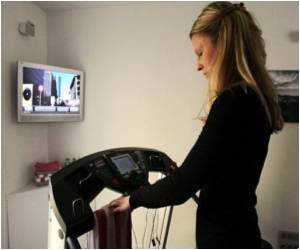
‘Short, five minute treadmill test can predict the risk of mortality similar to the maximal fitness test.’
Tweet it Now
Ms. de Lannoy’s findings show a shorter treadmill test, called a submaximal fitness test, predicts the risk of premature death similarly to the maximal test. This is an important finding as it provides the clinician with options for assessing the health and risk of their patient. "This study shows that the risk association with submaximal fitness is similar to that of maximal fitness, which suggests that the submaximal fitness test, which requires less than one-third the time of a maximal fitness test and does not require the patient to reach maximal exertion, is a pragmatic alternative to maximal fitness tests for assessing mortality risk in clinical settings," explains Ms. de Lannoy. "Finally, submaximal fitness predicted mortality risk above and beyond traditional risk factors, therefore this test provides information that influences and enhances patient management."
To determine the results, the research team used data from a large study of 6,106 men and women, followed from 1974-2002 to look at change in submaximal test performance over time and its relationship to risk of premature death.
Source-Eurekalert















